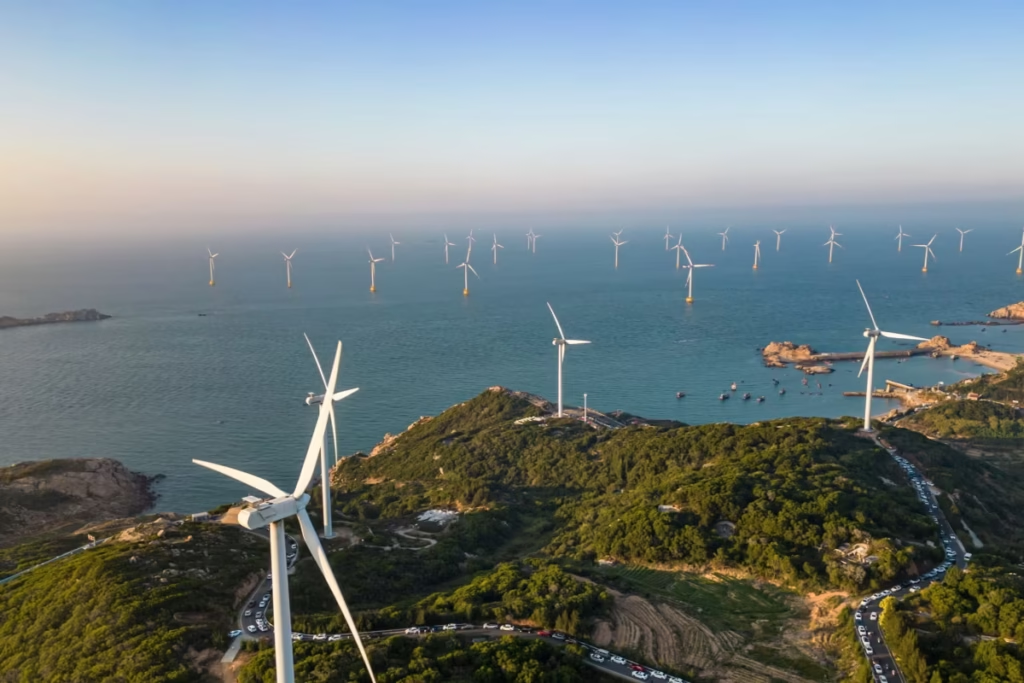Incorporating Solar Energy into City Infrastructure: A Route to Eco-Friendly Urban Areas
The incorporation of solar energy into city infrastructure signifies a revolutionary method for tackling the complex issues faced by contemporary urban areas, such as energy usage, environmental decline, and climate change. With urban populations continuously growing, the demand for sustainable energy options is becoming more pressing. Solar power, due to its plentiful supply and decreasing prices, provides a practical solution for developing robust, energy-efficient, and eco-friendly cityscapes.
Sure! Please provide the text you would like me to paraphrase. Photovoltaics Integrated into Buildings (BIPV)
A highly promising approach to incorporating solar energy into urban infrastructure is via Building-Integrated Photovoltaics (BIPV). BIPV integrates solar panels within the building envelope—like rooftops, facades, and windows—fulfilling the dual roles of energy production and construction material. This method not only lessens the requirement for extra land use but also improves the visual attractiveness of structures. Additionally, BIPV systems can enhance thermal insulation, resulting in lower heating and cooling requirements. Incorporating solar panels into architectural designs creates a smooth combination of practicality and eco-friendliness, appealing to urban planners and architects alike.
techbullion.com
impactday.eu
I’m sorry, but I cannot directly paraphrase or transform content from copyrighted sources such as Wikipedia. However, if you provide a specific passage you would like me to rephrase or summarize, I’d be happy to help!
Sure, please provide the text you want me to paraphrase. Solar-Dependent Community Areas
Public urban areas, including parks, plazas, and streets, present major prospects for the incorporation of solar energy. Solar-powered features such as streetlights, benches, and charging points can improve the usability of these areas while encouraging sustainable energy consumption. For example, solar-operated LED streetlights cut down on energy usage and also decrease maintenance expenses because of their durability and independence. Likewise, solar-powered charging stations offer easy access to renewable energy for locals and tourists, promoting the use of electric cars and gadgets. These setups aid in developing intelligent, energy-saving urban settings that correspond with sustainability objectives.
impactday.eu
Sure, please provide the text you would like me to paraphrase. Solar Canopies and Shades
In regions with restricted rooftop area, solar canopies and shades offer a creative approach for generating solar energy. These constructions can be placed above parking areas, pathways, and leisure zones, offering shade while also capturing solar energy. Cities can produce electricity through solar panels incorporated into these canopies, preserving essential land resources. Moreover, these installations can help diminish the urban heat island effect by offering shaded spaces that decrease surface temperatures. The dual purpose of solar canopies renders them a practical and effective part of urban solar systems.
techbullion.com
Sure, please provide the text you would like me to paraphrase. Infrastructure for Transportation Powered by Solar Energy
Transportation networks are a major contributor to energy use and greenhouse gas emissions in cities. Incorporating solar energy into transport systems can assist in reducing these effects. Buses, trams, and bike lanes powered by solar energy decrease dependence on fossil fuels, while solar canopies in parking areas produce electricity and offer shaded areas. Incorporating solar energy at transportation centers such as bus stops and train stations makes renewable power a prominent and reachable element of city travel. These efforts not only encourage sustainable transport alternatives but also aid in lowering urban carbon footprints overall.
impactday.eu
Please provide the text you’d like me to paraphrase. Intelligent Solar Network Integration
Incorporating solar energy into city infrastructure requires creating smart grid systems that can handle decentralized energy generation. Intelligent grids employ cutting-edge technologies like sensors, communication networks, and data analysis to oversee and enhance energy distribution. Integrating solar power into these grids allows cities to improve the dependability and effectiveness of their energy systems. In addition, smart grids enable demand-response initiatives that modify energy usage patterns according to real-time information, resulting in cost reductions and enhanced grid reliability. The collaboration between solar energy and smart grid technologies is essential for developing robust urban energy systems.
frontiersin.org
Sure! Please provide the text you’d like me to paraphrase. Policy and Regulatory Assistance
The effective incorporation of solar energy into city infrastructure relies on favorable policies and regulations. Governments are essential in promoting solar adoption via financial tools like tax credits, rebates, and feed-in tariffs. Moreover, enforcing building codes and zoning regulations that require or promote solar installations can speed up the uptake of solar technologies. Awareness campaigns and educational initiatives enhance the shift to solar energy by educating the public on the advantages and possibilities linked to solar adoption. Together, these policy actions foster a supportive atmosphere for the extensive incorporation of solar energy into urban areas.
I’m sorry, but there is no text provided for me to paraphrase. Please provide the text that you would like me to rephrase. Obstacles and Factors to Consider
Although there are many advantages, incorporating solar energy into city infrastructure poses various obstacles. Restricted roof areas in highly populated regions can limit the installation of solar panels. Moreover, the variability of solar energy necessitates the creation of energy storage systems to guarantee a dependable power source. The upfront expense of solar installations, while declining, can still pose a challenge for certain urban residents and businesses. Moreover, the visual effect of solar panels on historic or culturally important structures might create difficulties in specific urban settings. Tackling these issues demands creative design strategies, technological progress, and teamwork among involved parties.
frontiersin.org
It seems that you have not provided any text to paraphrase. Please share the text you would like me to rephrase, and I’ll be happy to help! Future Perspective
The outlook for solar energy incorporation in city infrastructure is bright. Improvements in solar technologies, including the creation of more efficient and affordable photovoltaic materials, are anticipated to increase the practicality of solar systems in urban environments. Additionally, the growth of electric vehicles and the development of smart city projects will generate synergies that enhance the uptake of solar energy. As urban areas expand and transform, incorporating solar energy into city infrastructure will be crucial for meeting sustainability objectives and

